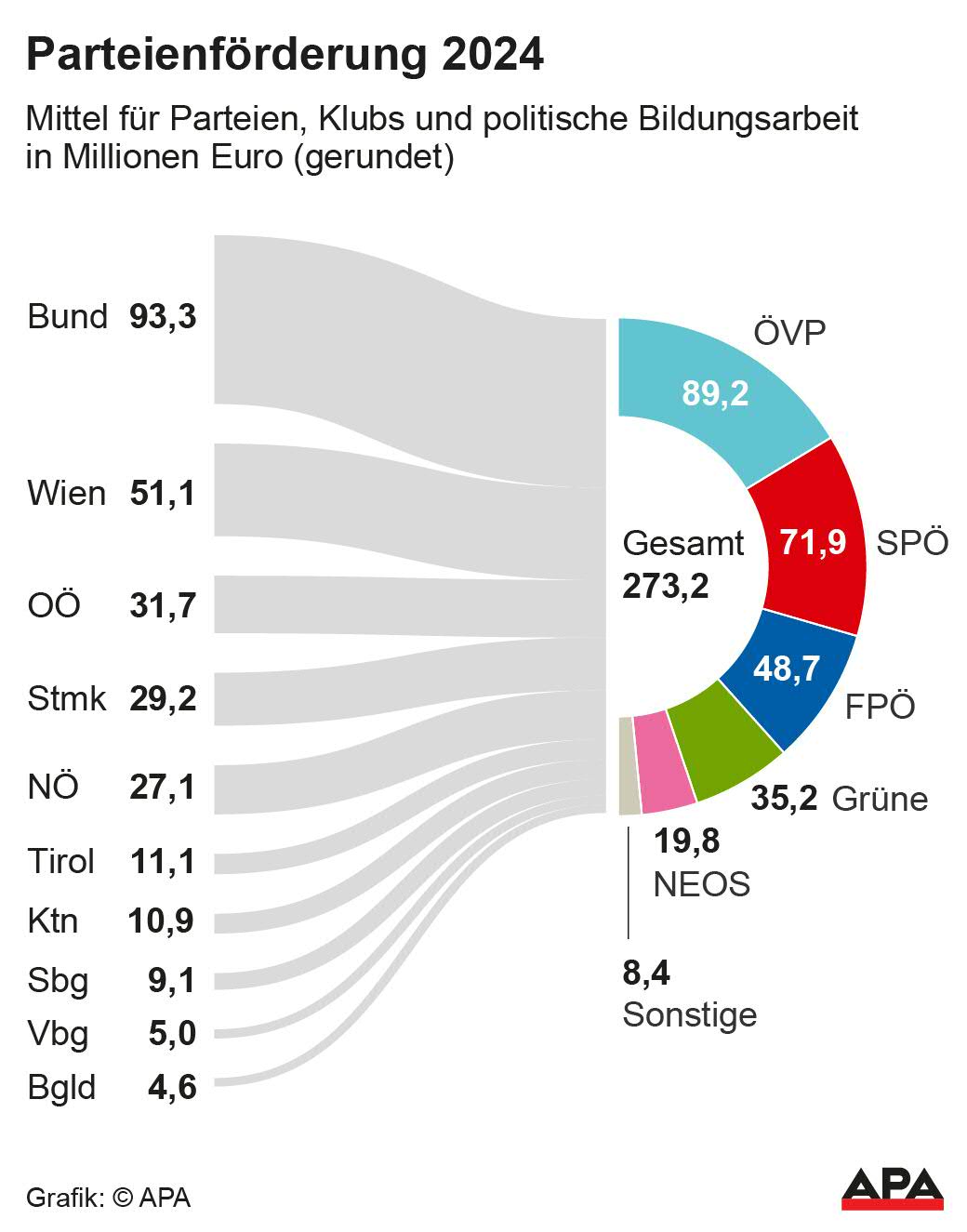Party Funding in Austria Has Increased Significantly

The party funding supports both the parties and their parliamentary and state parliament factions, as well as political education work. The increase compared to 2023 is almost 15 percent. However, this sum also includes special support for the EU election amounting to 14.7 million euros.
FPÖ with the Strongest Increase in Party Funding
The majority of the funding goes to traditional party funding (194 million euros), which primarily pays for the parties' election campaigns and personnel costs. A smaller part goes to the parliamentary groups and the state parliament groups (62 million euros), thus supporting the work of the deputies. The rest (almost 17 million euros) goes to the party academies and finances, among other things, further training measures for deputies and officials. The FPÖ benefited most from the increase in funding in 2024. This is mainly due to recent electoral successes. Including special funding for the EU election, the FPÖ and its state parties received almost 23 percent more than in 2023. In total, this was 48.7 million euros. With the exception of the NEOS, weak election results significantly dampened the increase for the other parties. The ÖVP still receives the most money from public subsidies with 89.2 million euros (plus 11.6 percent). This is followed by the SPÖ with 71.9 million euros (plus 12.5 percent), ahead of the Greens with 35.2 million euros (plus 14.1 percent) and the NEOS with 19.8 million euros (plus 18.2 percent). A further 8.4 million euros go to other parties, such as the KPÖ or state and regional lists.

Party Funding Grows with Inflation
The strong increase of almost 15 percent is due on the one hand to the special funding for the European election, which brought the parliamentary parties 14.7 million euros. On the other hand, the parties also benefit from high inflation. Because the funding from the federal government and the states usually grows with inflation or with civil servant salaries. Even without the EU election, the subsidies would have grown by 8.4 percent in 2024. The federal government naturally pays the most money. Here, 93.3 million euros flow into the political work of the parties through party, club and academy funding. This is followed by Vienna with 51.1 million euros, Upper Austria with 31.7, Styria with 29.2 and Lower Austria with 27.1 million euros. The smaller federal states pay out less: 11.1 million euros in Tyrol, 10.9 million euros in Carinthia, five million euros in Vorarlberg and 4.6 million euros in Burgenland.
Party Funding: Vienna Election Decides on Large Funding Pot
Measured by the number of inhabitants, however, Vienna is clearly ahead of all other states: 25 euros per inhabitant per year flow into political subsidies in Vienna, in Styria it is 23 and in Upper Austria 21 euros. For comparison: The federal government pays out 10 euros per inhabitant to parties, clubs and academies. So when elections are held in Vienna next year, it's not just about political influence, but also about a lot of money. Because in all federal states, the election results decide on the distribution of funds: The more votes a party receives, the higher its share of party funding. With the Vienna municipal council election, the second largest funding pot for the parties is therefore also being redistributed.
(APA/Red)
This article has been automatically translated, read the original article here.





